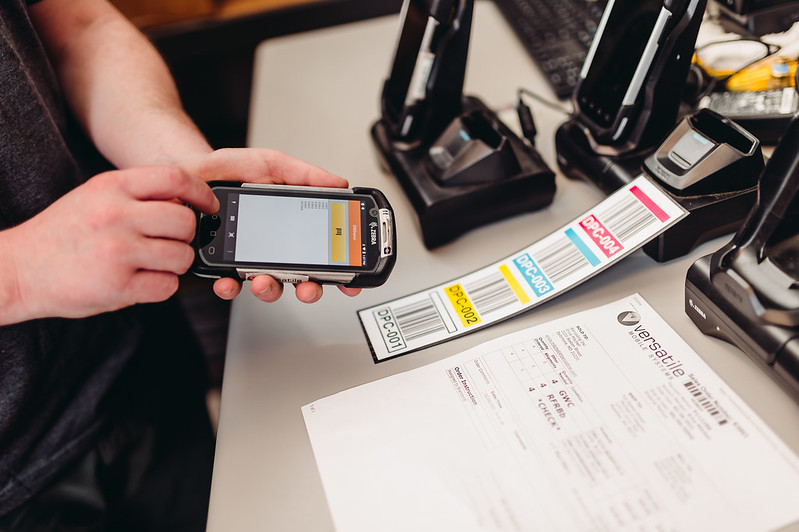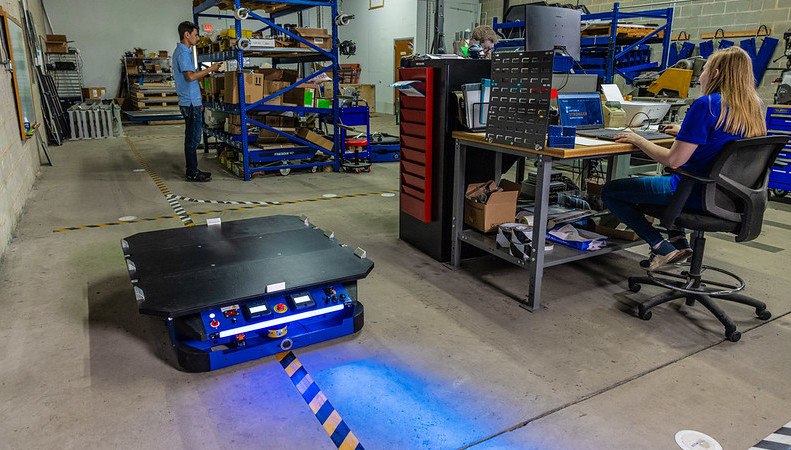A scanner’s barcoding software does a remarkable job of recognizing barcodes and capturing their data quickly and accurately—yet the process isn’t entirely immune to error. With some knowledge of basic best practices, though, you can avoid common mistakes that will slow your processes down (and decrease productivity).
Several factors affect the precision with which barcodes are captured, including the clarity of the barcode print, its location, and others. Follow these tips to ensure that you’re capturing what you want, and how you want it.
Tip #1: Choose the right spot
When selecting a location on your items to place barcodes, think about the needs of the worker tasked with scanning, and about potential damage to which you’re exposing the barcode.
If users have to hunt for the barcode, the process will slow significantly. This can happen if the location you’ve chosen is likely to be covered or partially obscured by other objects, if the area is prone to dirt and debris, or simply if it’s in a hard-to-reach spot.
Similarly, if the barcode is located in an area that’s likely to be damaged (near box corners that tend to buckle, for example), the barcode will be unreadable and workers will have to interrupt the process to get the information they need.
Tip #2: Choose the right surface
If you have the ability to choose the surface on which the barcode is printed, opt for matte finishes. Glossy materials—printed poly over-wraps, for example—make scanning more difficult because these surfaces diffuse light and don’t always accurately reflect the scanner’s infrared light.
Tip #3: Choose the appropriate perimeter
There’s a thing called a “quiet zone” around every barcode (or, more accurately, there should be one). This blank space around the perimeter of the barcode tells the scanner where the barcode starts and ends. Generally speaking, this area should be five times the width of the narrowest bar in the barcode—around an eighth of an inch. Make sure the placement of your barcodes allows for this quiet zone or the scanner may have trouble finding them.
Tip #4: Choose the right colors.
The majority of barcodes are black lines printed on light backgrounds, and for good reason: they’re more easily recognized by scanners. Light-colored bars on light backgrounds won’t scan well; the same is true of dark bars on dark backgrounds. The best are black lines on white backgrounds. Many companies today are finding ways to enhance their packaging with uniquely shaped barcodes in corporate colors. While this is perfectly acceptable, you must be certain the shape and color is optimally readable before deciding to leverage the barcode for branding purposes.
Tip #5: Choose the printer and label stock.
The label printer and label material you choose are important factors in the readability of your barcodes.
There are different types of label printers, and different label materials to choose from:
- Direct thermal barcode printers use no ink or toner; instead, they use heat to imprint a barcode onto direct thermal labels. Direct thermal prints are not highly durable because the label material is sensitive to heat, abrasion, and light, and can degrade over time
- Thermal transfer printers, on the other hand, apply heat to a ribbon to transfer wax or resin onto the label. Wax, wax resin, and resin ribbons print differently, and each is appropriate for specific needs. Resin ribbons, for example, are best for extreme conditions where heat, cold, chemicals, or abrasions are likely, such as outdoor environments.
There are many different label materials available—each with their own set of features that affect durability and printer performance. The label stock you choose should align with the environment in which it will be used.
Tip #6: Choose the right partner
As you can see, there are many choices to be made in order to maintain an optimized barcoding system...and that’s why choosing an experienced partner with a keen eye on ongoing and emerging technologies is also necessary for proper barcode performance. Expertise in the options available and their relative value to your specific needs can’t be overstated. A team like Barcoding is capable of not only identifying the best printers and labels for your needs, but can also offer alternatives (such as RFID technology) when barcodes may not be the best overall data capture solution.
When executed correctly, a barcoding system will improve efficiency and make your people more productive. Without a proven team of industry experts at your side helping guide and advise you, though, mistakes and missteps can happen. The insights of the Barcoding team will help you avoid costly mistakes and give you access to best practices and new innovations to enhance your system’s performance.
Find out if your printers and labels are doing all they should to improve your supply chain performance by downloading our free Labeling Assessment—all you have to do is click the link below to get started.







